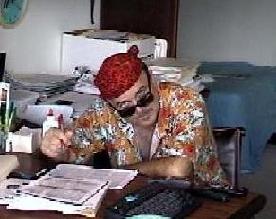The Cape of Storms or Good Hope
Cape of Bad Storms or Good Hope
The incredible voyage of Bartholomeu Dias
by David Arthur Walters
Bartolomeu Dias (1450-1500) discovered and probably named the Cape of Good Hope. In 1486 rumors were afloat in Portugal that a great Christian ruler, Organe, ruled over a domain far to the east, where the legendary Prester John had once reigned. King John II and his advisors hoped that an alliance might be had with Organe, to advance the continuing crusade against the infidels.
Shortly after the rumor surfaced, King John sent two explorers overland to locate India and Abyssinia. He also ordered Bartolomeu Dias to sea, to find the southern extent of Africa, and, hopefully, a sea route to India. The hoped-for new route would allow Portugal to circumvent the usual Muslim and Jewish intermediaries and to monopolize the shipping and trading business with the East.
Dias and his crews sailed with two small caravels and a store ship in August 1487. The store ship was eventually left behind on the African coast to replenish the caravels on their return voyage. The expeditionary force included six Africans, two men and four women who had been seized on previous expeditions and who were now expected to serve the Portuguese as involuntary diplomats. They were well fed and dressed up in European clothes. The plan was to drop them off in Africa with spices and gold, pick them up later and debrief them. One of them, a woman, died aboard; the five others, along with two women who had seized along the way, disappeared after being put ashore to carry out their diplomatic duties پEstrange as this might seem, they were never heard from again.
Dias was prevented by storms from sailing along the coast of Africa. For thirteen days the ships were forced to run south with close-reefed sails before the gales, out of sight of land. The tiny fleet of little ships turned port to find land after the winds calmed. Finding none, Dias sailed north and landed at a place he named the Bay of St. Blaise (Mosell Bay) because they had arrived on the saint's feast day, February 3, 1488. Dias and his men had unwittingly rounded Africa’s cape.
The natives around the bay were terrified and threw stones at the intruders. Dias tried to warn them off with a crossbow, but the "woolly-haired cattle-drivers" had never seen a crossbow, and continued with their assault; Dias killed one of them with an arrow - the victim has been called "the first victim of white aggression in South Africa."
The expedition was running low on supplies and the crew was grumbling. To avoid mutiny, Dias agreed with his officers to sail north along the East African coast for a few days, then come around and head home, which they most reluctantly did, knowing they had in fact found a clear ocean route to India. When they came back around, the voyagers beheld what they had not seen before, "that glorious and famous cape, hidden for so many hundreds of years."
Homeward bound, they found the store ship they had left behind nine months before. Africans had killed six of its crew of nine during a robbery attempt. One of the three survivors, a clerk from Lisbon named Firnao Colaco, gravely ill when found, was overwhelmed and died of joy upon seeing his companions. The supplies were unloaded and the worm-eaten ship was burned because it was no longer seaworthy.
Christopher Columbus was at the Portuguese court when Dias presented his report. Columbus made notes, giving the date of Dias' arrival as December of the year 1488 - hence Dias and his men had been gone for 16 months and 17 days. Dias had sailed 1,400 miles of uncharted African coastline پEhis charts would be of good service to Vasco de Gama. Most importantly, he had discovered an unobstructed sea between Africa and India.
Dias sailed southwards again,in March of 1500, with Pedro Alvares Cabral's fleet of thirteen ships. The fleet swung far out West into the Atlantic, on the way around the Cape of Good Hope to India, thus was Brazil “discoveredپE Sail was then set for Africa. A heavy storm sank four of the ships in the waters around the cape. Dias and the other drowned men were said to be the first European food for fish in those dreadfully stormy waters. We do not know for sure whether Dias originally named the cape the Cape of Storms, or the Cape of Good Hope. Depending on the circumstances, either name would do.
Note: Historians believe Europeans actually landed in South America a few years prior to the voyage of Pedro Alvares Cabral. Furthermore, Africans might have accidentally discovered South America long before the Europeans and made regular voyages thereafter پEI think we underestimate the navigational abilities of our prehistoric ancestors.
